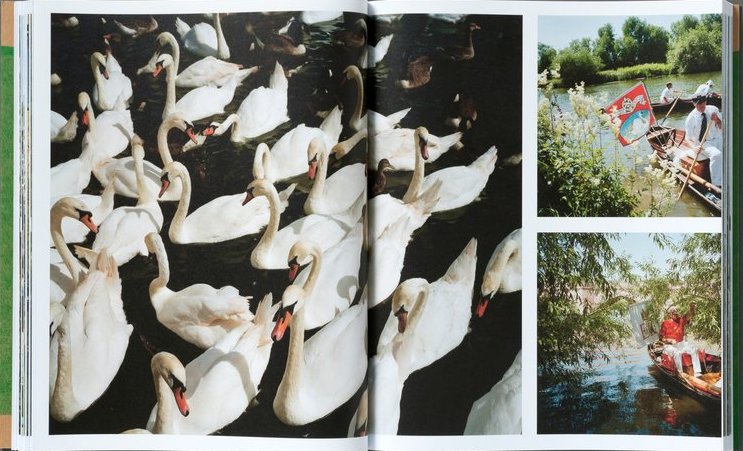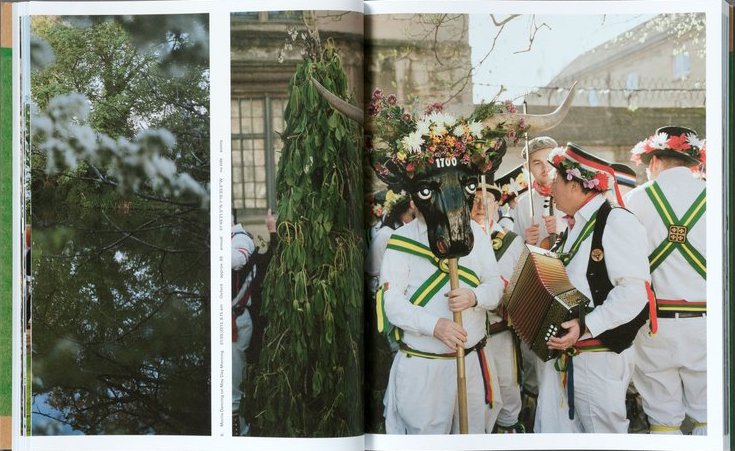Alistair Fitchett considers rivers, and photographs of rivers.

From ‘Thames Log’ by Chloe Dewe Matthews
It is rare for most of us to ever experience the length of a river, and if we do it is unlikely that the experience will be one made ‘in real time’ as it were, for rivers are long and our days relatively short. For myself, nearly three decades have been spent living and working near the Exe, and whilst at various points I have enjoyed the pleasures of estuary expanses and the rolling luxuriousness of the valley snaking up towards the moor, these are all momentary, disconnected visions, each with a different texture and timbre. At the estuary it is John Virtue’s vast black and white paintings glowering with the power of abstract expressionist marks, the suggestion of All Saint’s Church tower rising from the mists. On the moor I cannot help but be reminded of the landscapes of the brothers Nash, perhaps particularly Paul and his strange natural spiritualism, even though neither of them, to the best of my rudimentary knowledge, actually painted Exmoor. Spirt of place meaning much more than specifics, perhaps. Meanwhile, down in the wooded valley and close to home on the flood plains, I very much value the photographs of Jem Southam. In his The River – Winter work of 2010/11, he photographs the Exe in the rare heavy snowfall of that particular December, whilst also capturing the detritus washed up by the regular floods around Brampford Speke. Elsewhere there are beautiful images of the leats around Rewe, a reminder that the landscape here is crisscrossed by these structured waterways which feed rural industry and collaborate in the visual trickery of the bucolic picturesque. In this, Southam’s photographs of the river are akin to his glorious shots of China clay pits: a reminder that the human hand is all over nature and that there is beauty in decay and temporal destruction.
Staying in the South West, I remember that back in 2008, Colin Sackett of the wonderful Uniformbooks imprint published the Upstream/Downstream book, which documented crossings of the river Axe in Dorset from source to mouth, or mouth to source, depending on which order you choose to read it. For once in my life I am not being pejorative when I say that Sackett approaches the subject as a Geography teacher might, with photographs that are more interested in objective recording of geographic ‘fact’ rather than subjective visual pleasure. Is this a textbook or an art project? Or neither? Or both?
Sian Davey’s 2018 book of photographs of her daughter Martha, collected in a book of the same name, are seldom ‘of’ a river, yet the river Dart is very much a prevailing presence permeating the work. It is most physically present in the wonderful shots of teenage Martha and her friends wild swimming in its depths, but as Kate Bush (Tate Britain’s Adjunct Curator of Photography, not the musician…) says in her accompanying essay, it is much more than this, as ‘The river Dart gives Martha its spirit of place and another metaphor of transformation’.

From ‘Thames Log’ by Chloe Dewe Matthews
As far as English rivers go, it would certainly be fair to say that the Thames must be the one most documented and reported on. Certainly I have friends who have walked its length, and others who revel in exploring and enjoying the specifics of its many punctuation points. Like every river, it surely draws people to its spiritual power and aesthetic, agnostic charms like bees to nectar. In the opening lines of the essay that accompanies her recently published Thames Log, Chloe Dewe Matthews suggests that ‘we have lost our connection to water’ but I am not so sure of this. Indeed, leafing through her beautifully designed book and spending time immersed in its photographs, I’d suggest that this work gives lie to that very statement, just as does the never-ending flow of people venturing through our village to the swimming spots along the banks of my own Exe.
Kate Bush, writing about Martha again, reminds us that ‘Rivers are an archetype of change in every culture. They symbolise the flow of life’. Whilst this might be a case of stating the obvious, it is a thought worth coming back to with Thames Log, for this is exactly what Dewe Matthews’ photographs do. From images of neo-pagan women dressed in uniform hippie tie-dye dresses dancing by the banks through to mass baptisms and commuters crossing London Bridge, the heartbeat of ritual is one that underpins the entire book. Here are crowds of toffs at Oxford indulging in ceremonial boat burning, there a solitary bloke reading the Sunday papers against the industrial backdrop of the Tilbury Docks and the London Container Terminal. Flip the beautiful french-fold pages and find a couple engaged in evening prayer on the steps leading down to the foreshore at Southend On Sea, whilst just along the way three girls unpack a voluminous orange bag and drink wine and beer from bottles. Attempts to momentarily escape the realities of everyday life, perhaps, with the river an ever-present witness.
Further upstream at Cookham we find a small flotilla of punts engaged in the quintessentially English ritual of Swan Upping and remember of course Stanley Spencer and his own love affair with the Thames. At nearby Richmond meanwhile we witness the Hindu festival of Ganesh Visarjan, the idol immersed in the waters a reminder that one day all shall perish whilst the infinite (God, the river) shall prevail. Vivid reds and oranges visually unite the two juxtaposed moments, whilst of course the waters themselves provide a context of shared experience that make mockery of attempts to claim them as any particular this or that. And whilst it would be pushing things to suggest that Dewe Matthews’ photographs are political statements in themselves, it would nevertheless be true to say that Thames Log as an artefact cannot help but be seen as such. In a contemporary context where the chasm between those who would view multicultural, socially liberal attitudes as forces for good or ill seem wider than ever before, Thames Log does appear to unashamedly position itself on the bank beside those celebrating diversity and infinite change.
Thames Log, like my other favourite collections of photographs and paintings about rivers, tells stories that are by turns essentially fragmentary yet ultimately unified. Temporary and timeless. Here are the waters, forever flowing, simultaneously ambivalent and yet welcoming to all forms of individual communing and communal worship, regardless of constructed boundaries; open to all who would trace their infinite journeys.
*
‘Thames Log’ by Chloe Dewe Matthews is co-published by Loose Joints and the Martin Parr Foundation to accompany an exhibition of the series, opening Summer 2021 (exact dates TBC);
‘The River – Winter’ by Jem Southam is published by Mack books;
‘Upstream / Downstream’ by Colin Sackett is published by Uniformbooks;
‘Martha’ by Sian Davey is published by Trolley Books.